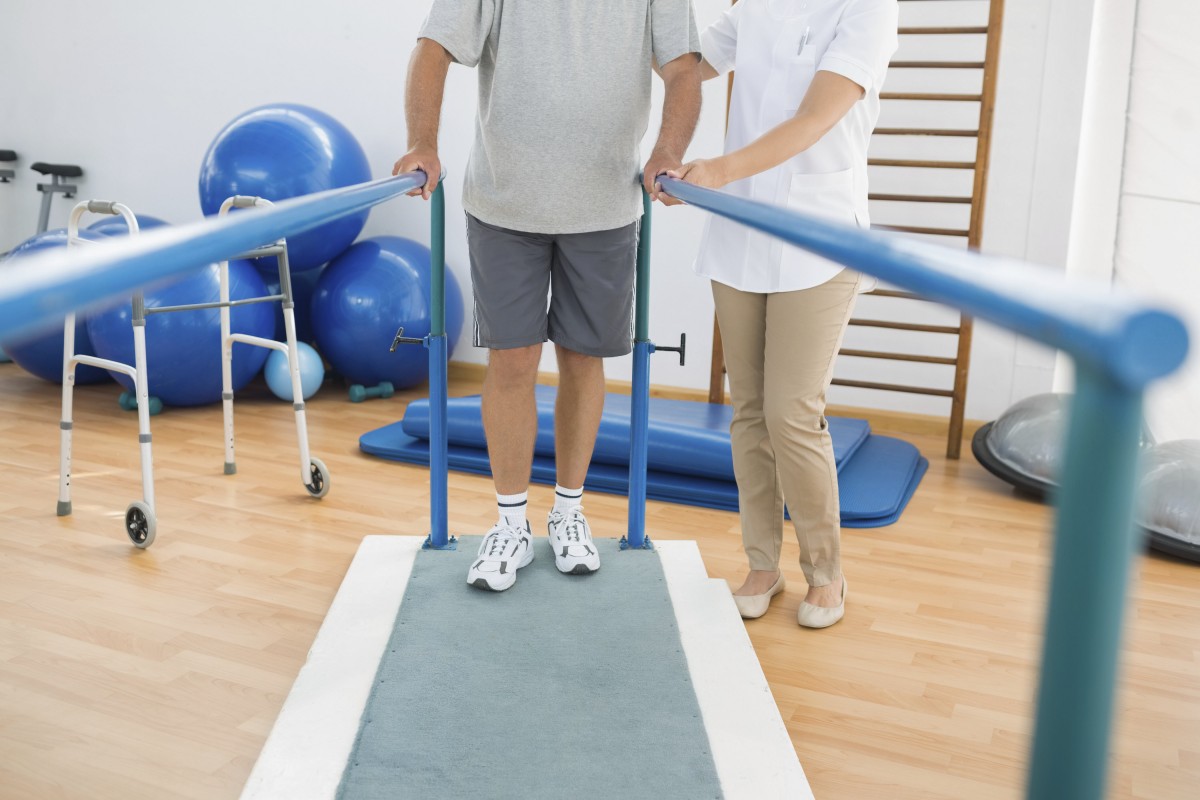
Do the Robot: the impact of robotic technology in spinal injury cases
Posted on 24 June, 2021By: Stephen Cottrell |
In our latest personal injury blog post, Stephen Cottrell discusses the impact of robotic technology in spinal injury cases.
I recently acted with Stephen Killalea QC for a client with a spinal cord injury [SCI] and a leg amputation. One of the striking features of this remarkable case was that the claimant had bought a robotic exoskeleton for daily use. We believe that our client was only the second SCI patient with a lower leg amputation in the world to use a robotic exoskeleton (click here to read the news item on this case). The company that manufactured the exoskeleton is ReWalk, but there are several companies that offer similar devices, and robotic technology is an eye-catching development that seems to offer real hope to SCI patients. But to what extent is exoskeleton technology revolutionary? And will its use for injured claimants have the effect of reducing other heads of damages such as care and loss of earnings?
In litigation, it will always be up to any given claimant to justify the substantial cost of a relatively novel and expensive piece of equipment such as an exoskeleton. The costs involved are not just the capital costs of purchasing and replacing the device but also the costs associated with having the patient assessed and fitted for the use of the device and then trained in its use. The overall figure is likely to run well into six figures (depending on the patient’s life expectancy). Evidential support will be required from medical experts but also technical experts such as occupational therapists and physiotherapists who can speak to their experience of the practical benefits that such technology has had on patients.
The Likely Benefits of Exoskeleton Use
These will always be a matter of expert evidence in any given case. There is currently a limit to the amount of time a patient can safely use the device each day. No doubt expert evidence will become more detailed as robotic technology use becomes more widespread. The expert and witness evidence in our case strongly suggested that:
- Being able to stand on a daily basis would help prevent osteoporosis – a common problem for SCI patients.
- Daily standing helped to alleviate back pain, which was otherwise a constant problem.
- There was a huge psychological benefit for the patient in being able to be at eye-level with his family.
- There was a great benefit to the patient in being able to spend time outdoors with his family with a degree of independence.
Detailed evidence of benefits such as these, not only in theory from the experts but also as a matter of day-to-day lived experience from the claimant and those closest to him is likely to be persuasive and difficult to contradict.
Potential Difficulties with Exoskeleton Use
It is likely that experts instructed by defendants will be instructed to seek out reasons why an exoskeleton may not be suitable or may not be beneficial in any given case. Generic objections are likely to include the notion that an exoskeleton might be no more beneficial to physical health than (say) an ordinary standing frame. More case-specific issues might include the need for the patient to have very good upper limb strength in order to tolerate the use of a device which typically requires the user to use crutches as part of the exoskeleton. Given that shoulder pain is often an issue for SCI patients after years of wheelchair use, it is foreseeable that this may be used as a basis on which to oppose exoskeleton use. It is up to the Claimant’s legal team to counter such arguments.
Current Limits on Exoskeleton Technology
While the ability to stand and walk will be hugely beneficial to many patients, an exoskeleton cannot yet be considered to be the main means of mobilising. Wheelchairs and mobility scooters are still likely to be required. Exoskeleton use goes beyond the merely therapeutic, but it difficult to envisage a user of the current generation of technology being able to use it to do shopping, housework or even office work (for example).
We are therefore not yet at a point where the use of robotic technology in litigation will undermine the more traditional heads of claim such as care, accommodation and loss of earnings. In fact, a well-prepared claim for the use of robotic exoskeleton might include additional claims for the cost of space in which to keep the equipment, or care in the sense of somebody to accompany the claimant while using the exoskeleton outdoors.
The Future
As ever, the future is unclear. It is difficult when pleading a claim for robotic technology to know exactly what kind of devices might be on the market in five years, let alone twenty years. Companies like ReWalk are constantly upgrading their products. Like all emerging technology – from smartphones to computers - there is a tendency for new items to be very expensive when they first appear in the marketplace, before the price reduces after a few years. At this moment in time, it is probably good practice to plead a claim for the future cost of robotic technology, and should be based on the current equipment costs but with a sensible contingency to cater for the likelihood of significant advances in the future.
Stephen Cottrell's practice consists predominantly of high-value Personal Injury litigation, Fatal Accidents and Clinical Negligence claims. He has extensive experience in catastrophic injury work dealing with brain injury, spinal injury, amputation, and complex multi-trauma. Stephen is recognised as a leading personal injury junior by Chambers & Partners and Legal 500.
Back to blog
Additional Information
All Blogs
Archive
- November, 2025
- May, 2025
- February, 2025
- January, 2025
- November, 2024
- September, 2024
- June, 2024
- April, 2024
- March, 2024
- December, 2023
- July, 2023
- May, 2023
- April, 2023
- March, 2023
- February, 2023
- May, 2022
- March, 2022
- February, 2022
- November, 2021
- October, 2021
- September, 2021
- August, 2021
- July, 2021
- June, 2021
- May, 2021
- March, 2021
- February, 2021
- November, 2020
- October, 2020
- September, 2020
- August, 2020
- June, 2020
- May, 2020
- April, 2020
- March, 2020
- February, 2020
- November, 2019
- October, 2019
- August, 2019
- July, 2019
- June, 2019
- May, 2019
- March, 2019
- February, 2019
- January, 2019
- December, 2018
- October, 2018
- September, 2018
- July, 2018
- June, 2018
- May, 2018
- April, 2018
- February, 2018
- December, 2017
- November, 2017
- October, 2017
- July, 2017
- June, 2017
- May, 2017
- April, 2017
- March, 2017
- February, 2017
- January, 2017
- June, 2016
- May, 2016
- April, 2016
- March, 2016
- February, 2016
- December, 2015
- November, 2015
- July, 2015
- March, 2015



